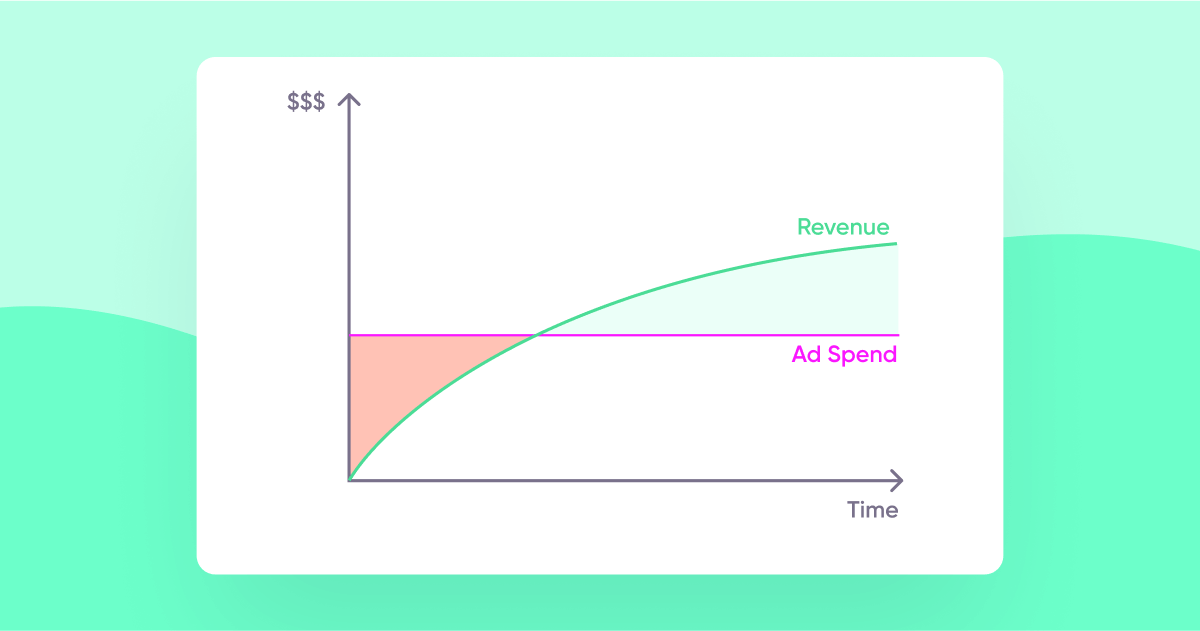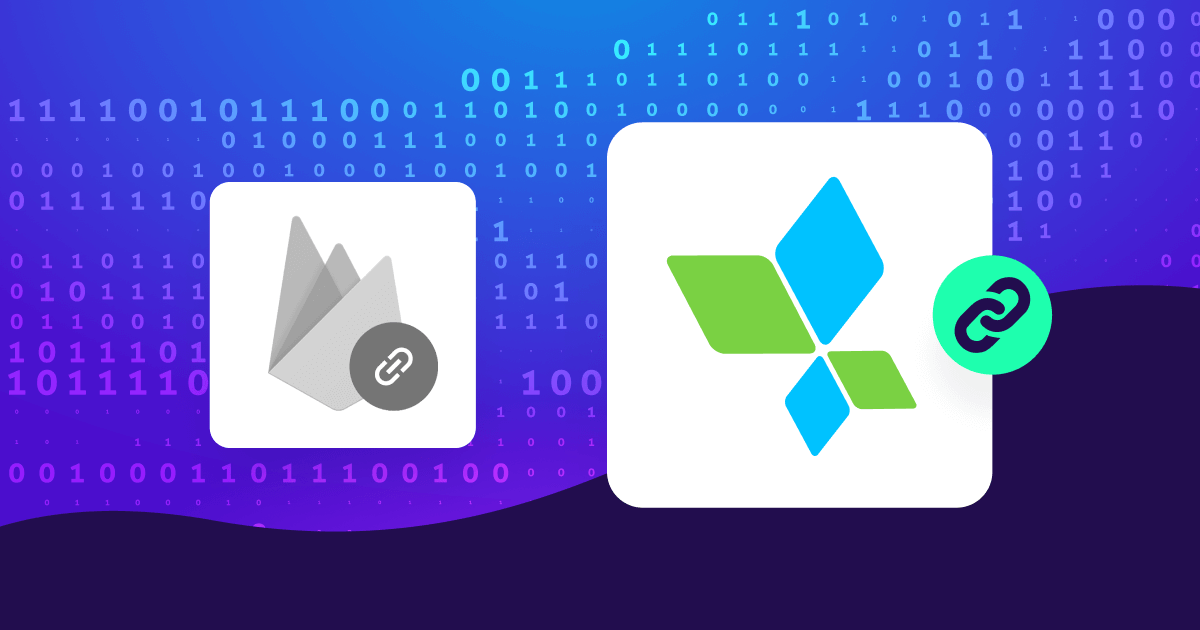
AVOD (Advertising-Based Video On Demand)
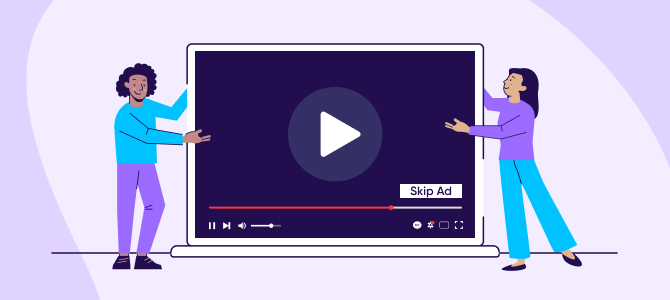
A video-on-demand monetization strategy that enables users to get free access to on-demand content on the platform in exchange for watching ads. The primary source of revenue in AVOD is ad revenue, which is used to offset production and hosting costs.
What is AVOD?
A monetization model used by several major video-on-demand platforms, AVOD offers viewers free and unlimited access to video content on the platform.
Instead of charging for viewership, this strategy aims to tap into these platforms’ vast audiences to generate revenue from advertisement.
Being able to watch their favorite videos for free is a highly alluring option for users, as evidenced by the hundreds of thousands of viewers who throng to these platforms. Figure this — there are 138.7 million AVOD viewers in the US alone, accounting for 46.6% of all internet users in the country.
By examining its business models, let’s dig deeper to understand the monetization strategy that fuels AVOD.
Publishers
These are the OTT platforms that create or host content and where advertisers pay to place their ads.
The more attractive the content is for viewers, the more attractive it becomes for advertisers, and a great source of revenue for publishers.
The free access given to users, paired with content quality, adds up to a high view count on AVOD platforms.
Advertisers
Marketers pay publishers to get their ads featured on streamed video content, helping advertisers generate brand awareness and encourage conversion. Advertisers usually rely on publishers for ad targeting on the platform. Advertising on CTV tends to garner a higher return on ad spend (ROAS) as publishers’ access to user-level data enables precise segmentation and highly personalized targeting.
Users
The end consumers in the AVOD model, users refer to viewers who access publishers’ platforms to watch their favorite content for free. While at it, they watch ads either before or during their video content of choice.
AVOD platforms
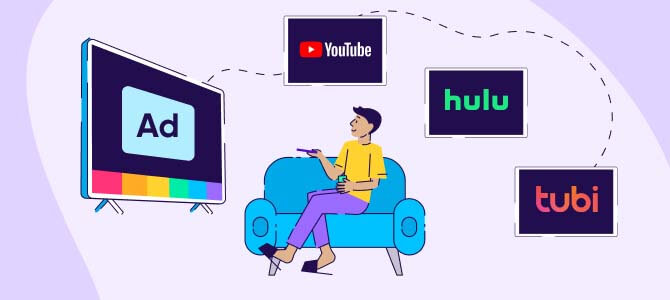
AVOD platforms are wildly popular among users, and nearly one in two internet users frequents them in the US.
The best example of an AVOD platform is YouTube, the video behemoth with over 2.5 billion active users. Although signing up on the platform is free, accessing content means you have to watch ads before or during your chosen videos.
As a highly efficient means to attract content creators and encourage them to put up popular content on the platform, YouTube shares its advertising revenue with its content creators.
Another leading example of an AVOD platform would be Hulu, where like YouTube, a premium plan is offered for users who prefer to watch ads-free content.
The advantages and disadvantages of AVOD
Advantages
1 – High viewership
80% of users claim they don’t mind watching ads in exchange for free content. And so, given its free and instant access, AVOD platforms enjoy high viewership that’s only picking up speed in recent years.
2 – Low risk
Unlike subscription-based, AVOD platforms don’t have to invest in creating content or buying rights to it. Instead, they serve as a platform where content creators can upload their videos to reach their audience, and get a share of the revenue from advertisement that’s incorporated in their content.
3 – Incentives for content creators
Offering content creators revenue incentives to upload new content means that new content isn’t a challenge for AVOD platforms.
When new content garners views, more ads are being viewed, the platform’s revenue increases, and so does the creator’s share of revenue (if it’s shared), which is a win-win for all involved.
4 – Better ad targeting
Advertisers have a good reason to throng to AVOD platforms, given these platforms’ large and diverse user base. Publishers can implement personalized ad targeting based on users’ behavioral data, making AVOD platforms increasingly more attractive for advertisers.
Disadvantages
Poor user experience
When not done right, ads have the potential to disrupt the user experience, which could lead to a drop in viewership and even churn. A premium ad-free plan can help remedy this to a great extent, but the real secret here is to get the timing, creatives, and frequency right
AVOD vs SVOD vs TVOD vs PVOD
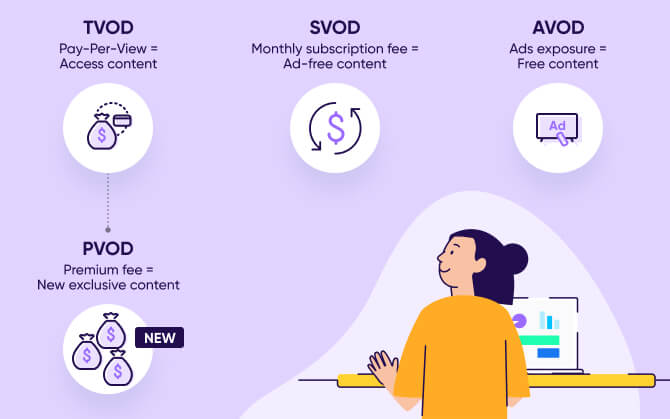
Now that we’ve established what AVOD is all about, let’s explore how it differs from other monetization models:
SVOD
Short for Subscription Video on Demand, these platforms require their users to pay fixed subscription fees on a monthly or yearly basis to access content on their platform. SVODs usually feature niche content and invest in content creation, which helps them get loyal users. Examples include Netflix, Amazon Prime Video, and Disney+.
TVOD
Transactional Video on Demand platforms are similar to AVOD platforms in the sense that users can sign up for free, but to access content on the platform, they’ll have to rent or buy it individually.
Rented videos usually come with a time limit or a cap on the number of times they can be watched, but purchased videos usually come with lifelong access.
An example for a TVOD service would be Apple iTunes.
PVOD
Short for Premium Video on Demand, this model is typically used alongside other monetization models. It gives users first and exclusive access to brand new content in exchange for a premium fee.
An example for a PVOD content would be “Mulan” on Disney+, where in some countries, the movie was running in theaters almost at the exact same time as being released on PVOD.
AVOD vs FAST channels

Free Ad-Supported Television (FAST TV) works on the same principle as AVOD in the sense that users don’t have to pay in order to access content and the revenue source for both is advertisement, but that’s where the similarities end.
FAST channels are linear like cable TV channels where content is delivered to a vast audience with ad breaks. The user has no control over what’s being played on the channel, whereas with AVOD — the user has.
Publishers, is AVOD the right model for you?
As a publisher, if you’re interested in monetizing your OTT platform with the AVOD model, it’s important to take the following into account:
- AVOD offers a relatively straightforward way to acquire new users, and would be well-suited to your needs if you’re not looking to manage complex subscription models.
- AVOD is also suitable if you’re after scaling your platform rapidly, and prefer not to invest in content creation.
- Make sure you have a constantly fresh library of content that appeals to a wide audience base, to ensure high user engagement and the lowest churn possible.
How to get started with AVOD as a publisher
If you’ve replied with an affirmative “yes” to all the conditions mentioned in the previous section, AVOD is likely to be the right model for you.
So, to get your platform up and running, here are the steps you should follow:
- Choose a reliable video content management system (CMS) to host and manage your videos.
- Develop your OTT platform from scratch or invest in an OTT app builder.
- Select a reliable CDN for fast video delivery to users.
- Decide on the various ad monetization options like instream and outstream ads, ad pods, VAST ads, and VPAID ads, among others.
Key takeaways
- AVOD is a video-on-demand monetization strategy, where the platform relies on advertisers to generate revenue while users get access to their favorite content for free. This is unlike SVOD, PVOD, and TVOD, where users would have to pay for access.
- It’s a low-risk monetization model that — as a publisher — helps you attract large audiences, and where content creators are motivated to upload their content on your platform for a revenue share incentive. The best example of AVOD platforms is YouTube.
- Both FAST channels and AVOD platforms monetize their content through ads, but as opposed to AVOD — FAST channels are linear and viewers have no control over the content they’re watching.
- As a publisher, you should consider launching an AVOD platform if you want to scale it up fast, don’t want to invest in content creation, have content for a wide audience, and prefer to avoid complex subscription models.
